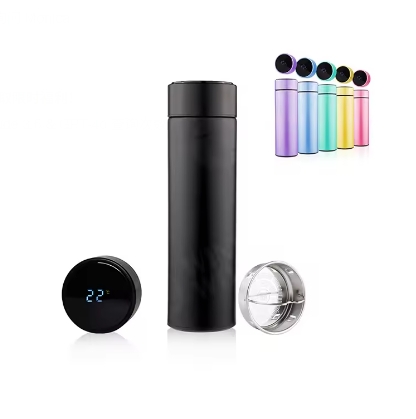Blog
Thermal Insulation Cups: A Guide to the Best & Safest Materials from Exporters

Whether it’s for a steaming hot coffee on a frosty morning commute or ice-cold water during a summer workout, a reliable thermal insulation cup is an everyday essential. But with a flood of options on the market, how do you know which one is right for you? More importantly, how do you ensure the materials are safe for you and your family?
This guide will walk you through everything you need to know about the best and safest materials for thermal cups. We’ll also provide a crucial checklist for those looking to source products directly from exporters, ensuring you get top quality every time.
Why the Material of Your Thermal Cup is a Big Deal
Before we dive into the specifics, let’s establish why the material of your insulated cup matters so much. It’s not just about keeping your drink at the perfect temperature. The right material impacts:
- Health and Safety: Your cup is in direct contact with what you drink. It’s crucial that the material is non-toxic and doesn’t leach harmful chemicals, especially when exposed to heat.[1][2]
- Durability and Longevity: A well-made cup is an investment. The material determines its resistance to rust, dents, and daily wear and tear.[1]
- Taste Purity: No one wants their morning coffee to taste like metal or yesterday’s smoothie. The best materials won’t absorb or impart flavors.[1]
- Thermal Performance: The primary job of an insulated cup is to maintain temperature, and the material and construction (like double-wall vacuum insulation) are key to its effectiveness.[3][4]
A Deep Dive into the Safest & Best Materials
Let’s break down the most common materials used for thermal insulation cups, weighing their pros and cons.
1. Stainless Steel: The Industry Champion
When it comes to the trifecta of performance, durability, and safety, stainless steel is the undisputed king.[3][5] But not all stainless steel is created equal.
What to look for: “Food-grade 18/8” or “304 stainless steel.” These terms are often used interchangeably.[6] This grade contains 18% chromium and 8% nickel, which gives it excellent corrosion resistance and makes it a safe, stable choice for food and beverages.[7][8] Some high-end options might use 316 stainless steel, which offers even greater corrosion resistance but at a higher cost.[9][10]
- Pros: Highly durable, excellent heat and cold retention, rust-resistant, and generally non-leaching.[1][4]
- Cons: Can sometimes impart a slight metallic taste initially, and can be heavier than plastic options.
2. Glass: For the Purest Taste
Glass is a fantastic choice for those who prioritize taste above all else. Its non-porous nature means it’s the best for flavor purity.[1]
What to look for: Double-walled borosilicate glass. The double-wall construction provides insulation (though often less than vacuum-insulated stainless steel), and borosilicate glass is more durable and resistant to thermal shock than standard glass.[1][5]
- Pros: No flavor transfer, aesthetically pleasing, and free from harmful chemicals.[1]
- Cons: Highly fragile, heavier, and less effective at long-term insulation compared to stainless steel.[3][4]
3. Ceramic: The Classic Comfort
Ceramic offers a classic, comfortable feel and is a safe choice for hot beverages.[1] Like glass, it won’t leach chemicals or affect taste.
What to look for: Lead-free and cadmium-free glazes. This is crucial, as low-quality or poorly glazed ceramics can pose health risks.[1]
- Pros: Excellent feel, no metallic taste, good heat retention for short periods.
- Cons: Breakable, heavy, and offers moderate insulation at best.[3]
4. Plastic: The Risky Option
While lightweight and cheap, plastic is generally the least recommended material for thermal cups, especially for hot drinks. The primary concern is the potential for chemicals like BPA (Bisphenol A) to leach into your beverage.[3][11]
What to look for: If you must choose plastic, ensure it is explicitly labeled “BPA-Free.”
- Pros: Lightweight, inexpensive.[3][4]
- Cons: Risk of chemical leaching, can absorb stains and odors, less durable, and poor insulation performance.[3]
Understanding Safety Certifications: Your Non-Negotiable Checklist
When buying a thermal cup, especially when importing, understanding safety standards is vital.
- Food-Grade: This means the material is safe for contact with food. For stainless steel, this is typically 18/8 or 304 grade.[6][12]
- BPA-Free: Essential for any plastic components, like lids or liners, this certification ensures the product is free from the harmful chemical Bisphenol A.[1][2]
- FDA (Food and Drug Administration): This is the standard for food contact materials in the United States.[13]
- LFGB (Lebensmittel-, Bedarfsgegenstände- und Futtermittelgesetzbuch): This is the German food safety standard, which is part of European regulation. LFGB testing is often stricter and more comprehensive than FDA standards, making it a mark of higher quality and safety.[14][15][16]
A Guide for Sourcing from Exporters
If you’re looking to import thermal insulation cups, you need to do your due diligence to ensure product quality and safety. China is the world’s largest producer of stainless steel vacuum-insulated containers.[17]
Here is a checklist to follow when dealing with exporters:
- Request Material Specifications: Don’t just accept “stainless steel.” Ask for confirmation that the inner body is made from 18/8 (304) food-grade stainless steel and that any plastic parts are BPA-free.[18]
- Ask for Safety Certifications: Request copies of FDA or, even better, LFGB test reports for the specific products you intend to buy.[9][13]
- Inquire About Quality Control: Ask about their testing procedures. Reputable manufacturers will conduct tests for leaks, temperature retention, and durability before shipping.[18]
- Order Samples: Before placing a large order, always get samples to test the quality, finish, and performance yourself.[17]
- Clarify Logistics and Incoterms: Understand who is responsible for shipping, insurance, and customs clearance by agreeing on specific Incoterms (globally recognized trade terms).[19]
- Check for Reviews and References: Look for other businesses that have sourced from the exporter and inquire about their experience.
By arming yourself with this knowledge, you can confidently choose a thermal insulation cup that not only keeps your drinks perfectly hot or cold but is also durable, safe, and built to last.
